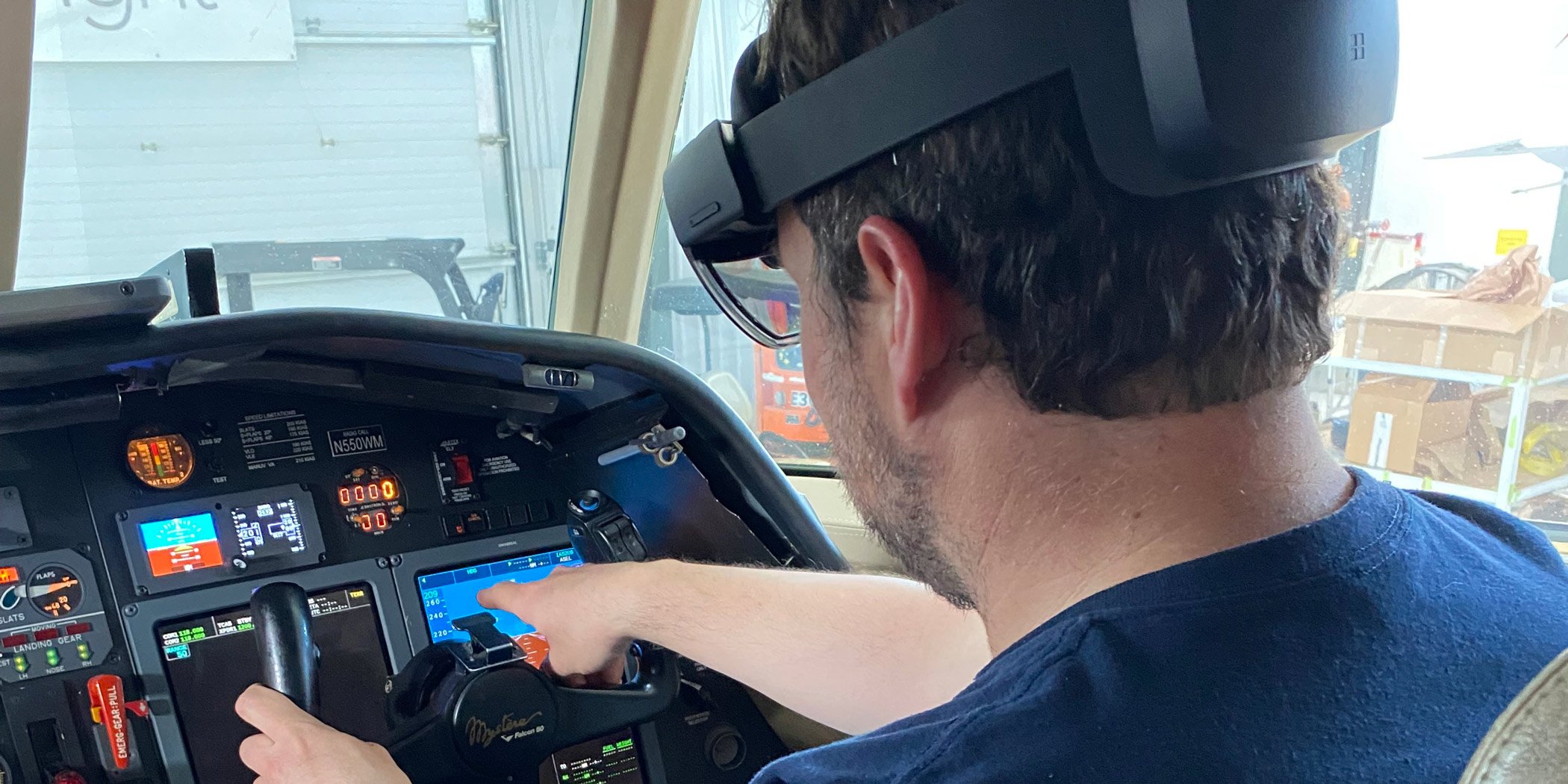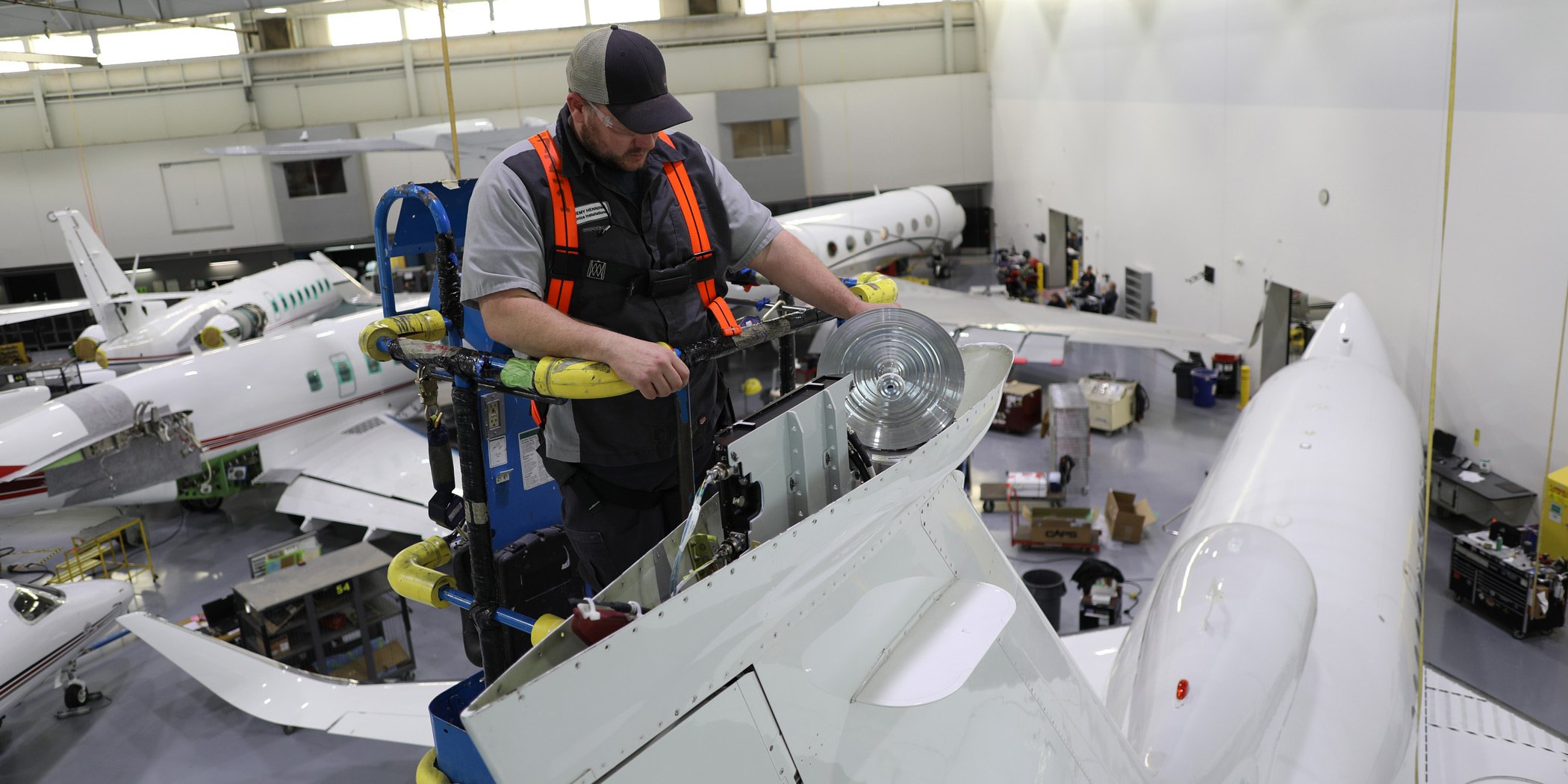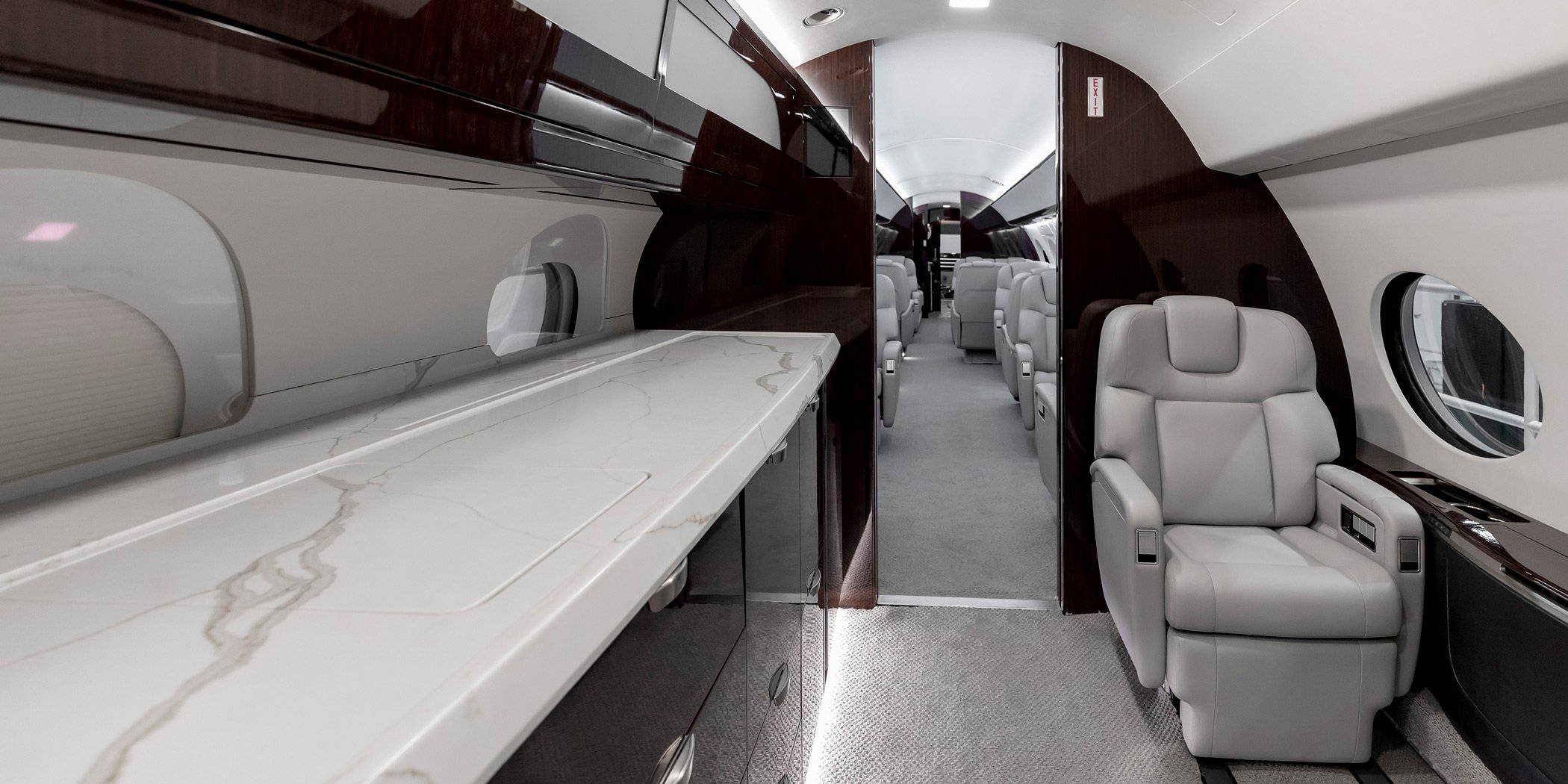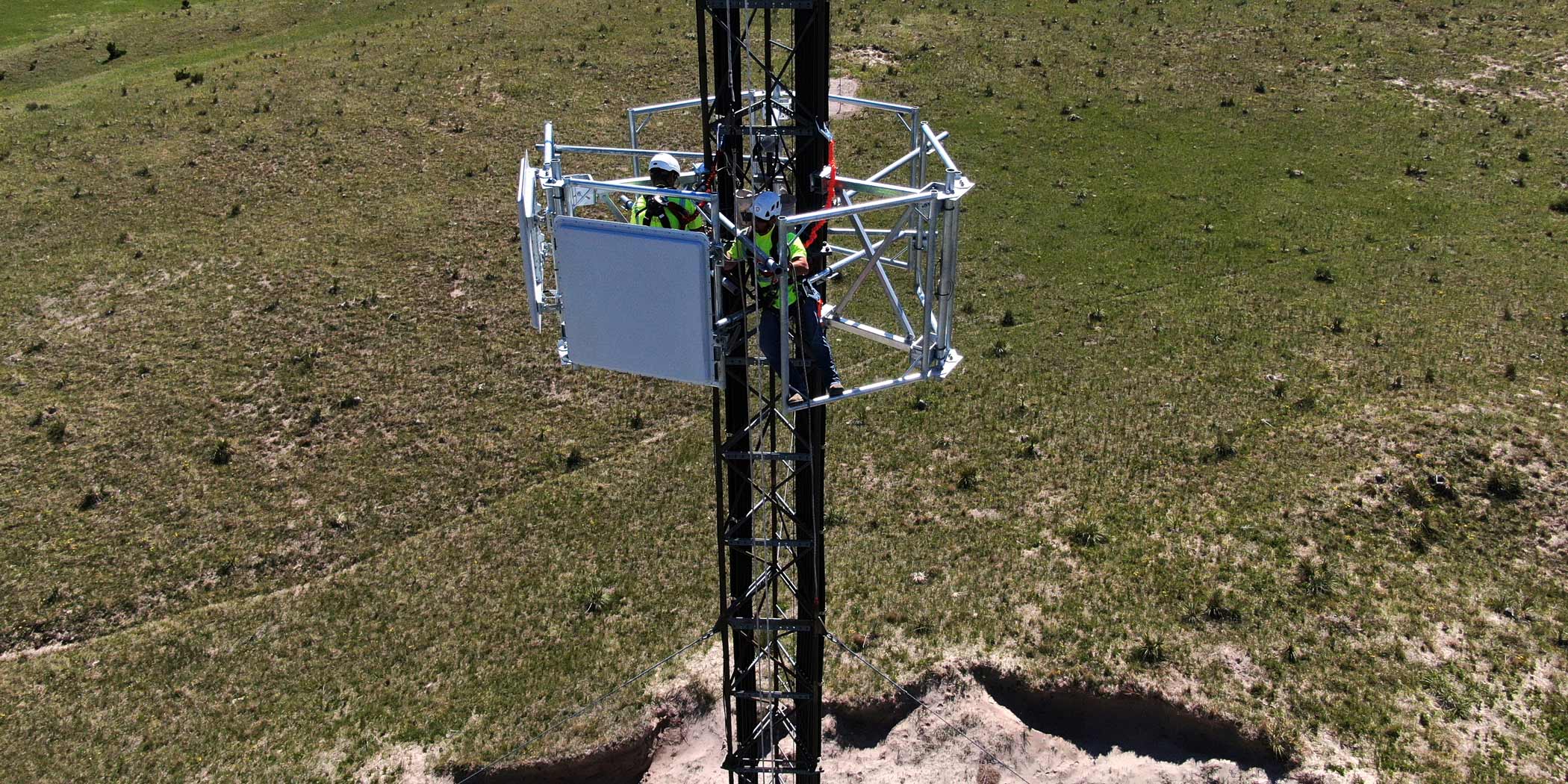Click Here to View This Page on Production Frontend
Click Here to Export Node Content
Click Here to View Printer-Friendly Version (Raw Backend)
Note: front-end display has links to styled print versions.
Content Node ID: 408284
In this year’s Product Support Survey, AIN readers once again rated Garmin at the top of the list in the Flight Deck Avionics category, with an 8.9 Overall Average, up 0.3 from last year. The rankings replicated last year’s results, with Collins Aerospace in second place at 8.2, down slightly from last year’s 8.3. Coming in third was Universal Avionics at 8.0, down 0.2 from last year, followed by Honeywell at 7.6.
In Cabin Management Systems, Gulfstream took over the top spot at 8.0, up 0.1 from last year, followed by Textron Aviation at 7.9. Collins Aerospace ranked in third place at 7.5, down 0.4 from last year, followed by Honeywell and Lufthansa Technik at 7.0.
Satcom Direct moved into first place in the Airborne Connectivity category, which AIN created last year to recognize this increasingly important segment, climbing 0.2 from last year to reach an Overall Average of 8.4. Gogo Business Aviation ranked second at 8.2, down 0.3 from last year, with Honeywell in third place with an Overall Average of 7.9, down 0.4 from last year. Collins Aerospace didn’t receive enough ratings to be compared to the others.
Garmin International
Garmin placed first in this year’s Avionics Product Support Survey, with an Overall Average for Flight Deck Avionics of 8.9, up from 8.6 last year, also first place, and with top scores in every category. According to Lee Moore, Garmin director of avionics product support, the company continues to fine-tune its avionics support efforts.
Recent efforts include adding dozens of new instructional videos with new content to the Garmin YouTube channel, which is linked to the e-learning section on the company’s “flygarmin” website. “We’re trying to make things more convenient for our customers, installing dealers, and OEMs,” said Moore. “We’ve also expanded our training team that is responsible for much of the content in terms of video, in-person training, and training catalog offerings.”
With in-person training, Garmin can come directly to a client location and provide personalized training with experienced Garmin instructor pilots. The Garmin instructors do not provide in-aircraft training, but rather use instructional kiosks fitted with the latest Garmin avionics to “sit you down and give you hands-on training on the ground,” Moore said.
A new section of the Garmin website is available to non-affiliated equipment installers where they can gain access to documentation, training, and FAQs. Dealers can continue to access the online Dealer Resource Center for all the data and documentation needed to perform installations.
This information is not available to the general public because Garmin uses it in part to train dealers and provide them and end users with a “better experience for the installer and ownership experience for the customer,” Moore said. Telephone service representatives also now have access to actual Garmin equipment as opposed to simulators or representations. “They are using real equipment to help you through whatever problem you have,” Moore said.
Collins Aerospace
Collins Aerospace, rated second with an Overall Average of 8.2 for Flight Deck Avionics, has been able to weather the unique challenges of the past few years by focusing on working with suppliers on resolving supply chain issues and providing customers 24/7 support—including technical support, repair support, and spares availability—and it has been able to do that “with little to no interruption,” according to the company. Many employees worked remotely during the pandemic, thanks to technology that Collins was able to put in place to maintain support levels, and now the company is returning to more normal employee travel and onsite activity. In the Cabin Management Systems category, Collins received an Overall Average of 7.5, putting it in third place.
The business aviation segment has been a strong point for Collins Aerospace and “has performed relatively well, driving focus on our ability to achieve growing support needs.” To enhance its support capabilities, Collins Aerospace developed new business and product performance analytics tools “to drive improvements in more predictive, on-time solutions.” It also prioritized expanding the customer base using its performance programs such as the Collins Avionics Service Program and Forward Exchange, while continuing to invest in MRO capacities.
A proactive approach to supply chain issues meant applying strategic risk mitigation. One example was setting up teams to watch for upcoming problem areas such as semiconductor shortages, then figuring out how to close any gaps. “We also increased staff at several of our locations and aggressively worked alternative solutions to keep us on schedule.”
Universal Avionics
Tucson-based Universal Avionics received an 8.0 Overall Average rating for a third-place ranking for Flight Deck Avionics in this year's survey.
In the first quarter, Universal Avionics consolidated services and support under one organization—Customer Services and Support—pulling together technical support, support services, technical publications, and training. “This was a great thing for us to do,” said Robert Clare, director of customer services. “Each department was under different leadership. Now we’re under one strategy for the services organization and we’re able to align the goals for the company and align the services' goals.”
One of the critical efforts under the new organization was to figure out how to take care of issues in the field remotely. Due to the Covid pandemic, support experts often couldn’t travel to customer sites, and in one particular case, the installation of a Universal Insight display system in Argentina needed some attention. The solution was the new Universal Avionics virtual support system, using off-the-shelf tools to do remote software updates, needed in this case for the configuration of the Insight installation.
The pandemic, Clare said, “accelerated development of these tools, and we were able to demonstrate we could help troubleshoot, configure, and load new software for the installation. We’ve been fine-tuning it, and now we’re able to support over a dozen aircraft remotely.” Not only does this save Universal technicians time, but the remote services help the installer to get the job done quicker and the operator to get in the air faster. And it is much more efficient than sending people all over the world with a laptop for software upgrades. “We’re looking to implement that with other products,” he said.
Also in the first quarter, Universal introduced 365 Remote Assist, where a technician wearing a Microsoft HoloLens mixed-reality headset can share their view of the work site with Universal field service engineers at the company’s Tucson, Arizona headquarters. The Universal engineers can virtually pass along documents that the remote technician can see inside the headset, all while discussing any issues and resolving problems in real-time. “This has been a huge tool for our field service engineers assisting multiple customers,” Clare said. “You could use a mobile device, but the HoloLens takes it to a new level.” This includes performing inspections, assisting with ground-test procedures, and configuring avionics.
Also in the past year, Universal launched a new department called Support Services, which consolidates the administration of database services, repairs, exchanges, rentals, loaners, used parts sales, and extended warranties. “By consolidating, we were able to streamline processes through all these services,” Clare said. ”If someone calls, things are more aligned from a process standpoint. It minimizes bouncing around calls and makes the experience as best as possible.” Cross-training of personnel in Support Services also helps ensure that problems get handled quickly instead of being passed around to find the right person.
Technical publications are transitioning to a more dynamic, real-time updating system to make the distribution of new information faster and eliminate static publications that are published periodically.
Also launched in August was the new customer onboarding campaign, designed to help explain everything a new customer needs once they join the Universal family and to make sure the lines of communication are open. It starts with a personalized message from Clare, then shares contacts in all the applicable departments and information on where to find services and support. “We want to make it a seamless customer journey once they decide to buy,” said Clare.
Honeywell Aerospace
Honeywell this year was rated at 7.6 Overall Average for Flight Deck Avionics, 7.0 for Cabin Management Systems, and 7.9 for Airborne Connectivity.
To continue improving product support, Honeywell has been modernizing its information technology architecture and refining the self-service portal that is the primary interface for dealers, owners, and operators of aircraft equipped with Honeywell avionics, cabin electronics, and airborne connectivity equipment.
“We’ve made a number of enhancements over the past year,” said Tim Valente, senior director of customer and product support for business and general aviation in the Americas. The portal allows users to track orders, receive quotes, update Maintenance Service Plan hours, issue payments, and view technical publications. “These are all getting revamped,” he said. “We’re doing it in stages and trying to make it all much more seamless.”
The jump in flight hours during and after the pandemic led to recent hiring for the AOG team, including 10 more people at the end of July. “With flight hours up, we need more support in the back office,” he said.
Customer support managers, meanwhile, are responsible for working with dealers and operators, and they have been assigned key specific dealers and regions, Valente said. “We tried to get the teams better aligned with the dealers and operators. They’re doing a lot of outreach.” For example, when Honeywell issued a new service information letter that will affect a customer, he added, “my team proactively reaches out.”
Honeywell is also tapping into virtual reality tools to speed up troubleshooting and help customers solve problems. Field service engineers can use Honeywell’s “Techsee” process to show the aircraft and the problem to someone at the technical operations center in Phoenix.
“Sometimes it’s easier to see things,” Valente said. “It’s still in the early stages. We’re constantly assessing technology to see if it’s something new and novel that we can adopt.”
To keep operators current, Honeywell also publishes an extensive series of videos on everything from how a new avionics feature works to complying with a service letter and more. Monthly newsletters provide updates on product support initiatives.
Like all OEMs, Honeywell is dealing with supply chain issues. “It’s industry-wide,” said Valente, “and we’re taking an all-hands-on-deck approach.” This means that everyone from company leaders on down is working with vendors to resolve supply problems, expedite parts, and find new suppliers. Examples of this include a recent improvement in the timely supply of components for Honeywell’s JetWave satcom system, helping ensure on-time delivery of JetWave installations. In another case, Honeywell worked closely with a vendor for FMS control subcomponents.
“We want to solve this, not just in the short term but the long term,” he said. “We want to fix it once and for all if at all possible.”
Gulfstream Aerospace
Gulfstream has been designing its own cabin management systems and providing airborne connectivity for many years and makes them available for both new and legacy aircraft. The company's Overall Average rating for Cabin Management Systems was 8.0, putting it in first place in this category.
"Our strategy is designed to provide the best cabin experience in the industry,” said Derek Zimmerman, president of Gulfstream customer support. “Once we design these solutions in-house, we work with our suppliers to integrate with existing aircraft systems.” This includes HD monitors, Bluetooth, cabin flight maps, “and other interfaces that provide elevated entertainment and connectivity experiences.”
To enhance support for new and existing customers, Gulfstream has been hiring more personnel worldwide as well as investing in training. This not only helps ensure new employees get onboarded properly but also helps Gulfstream “secure a new generation of technical talent,” he noted.
As for supply chain issues, Zimmerman admitted that there are challenges, he said, “but it has not significantly impacted our business, and we continue to work closely with suppliers to ensure a robust product support infrastructure and logistics base.” Gulfstream has invested more than $1 billion in parts inventory located worldwide and also in its own repair and overhaul capability. “Given the continued growth of our fleet and customer demand,” Zimmerman said, “maintaining a strong inventory of parts is incredibly important to ensure that the right items and quantities are available to address immediate customer needs and help keep our fleet flying around the world.
Textron Aviation
Textron Aviation received an Overall Average of 7.9 and second place in Cabin Management Systems this year. With thousands of Cessna Citation jets and Beechcraft King Air turboprops in the field, the company has a deep pool of legacy aircraft to support, many with outdated cabin management systems. “[We want] our customers to know that we hear them and understand their needs,” said Brian Rohloff, senior v-p of customer support. The company is constantly looking for solutions for obsolete systems and ways to improve its cabin management systems. “Our goal is to deliver reliable and capable systems at a competitive price,” he said.
To help customers learn about these new products and options, Textron Aviation created an online catalog of available modifications, searchable by aircraft model. Customers can also review and approve work as well as request new work while their aircraft is in the shop using the new Textron Aviation Service app’s service management portal. These improvements were driven by customer feedback.
Textron Aviation has been expanding with the addition of about 100 people per month “to support the increased demand for business aviation and its related support and maintenance needs,” Rohloff said. In a recent move, STCs were issued covering installation of Gogo’s Avance L-5 high-speed air-to-ground connectivity system in the CJ3/CJ3+ and CJ4. Textron Aviation is also offering new options for cabin LED lights and other cabin upgrades.
Bolstering inventory is one way that Textron Aviation service centers have tackled supply chain issues, but the company’s customer support team also communicates “with the global parts distribution and supply chain teams to ensure that needed parts are on order or made available to return aircraft to customers in a timely manner,” Rohloff said.
Lufthansa Technik
Lufthansa Technik (LHT), which manufactures the Nice HD cabin management system for both forward-fit and retrofit markets, has focused on optimizing product support during the past year. The company has long provided 24-7 first-level support for business aviation customers. Its Overall Average rating for Cabin Management Systems in this year's survey was 7.0.
Last year, LHT opened a new parts stocking location in Miami with a healthy inventory of business aircraft LRUs. At its Hamburg, Germany headquarters, LHT has added to the stock of AOG inventory. To improve second-level support, LHT has added Nice system engineers in Europe and North America. Online training has been enhanced, with new on-site and online training available for OEM installers, field representatives, and business aircraft operators.
Like other aviation electronics providers LHT has been dealing with supply chain issues.
“We early on assumed that the worldwide procurement crisis on semiconductors and several other raw materials could also put supply chains of electronic manufacturers under pressure,” Hinnerk Noelker, senior director OEM engineering and operations, original equipment and special aircraft services, told AIN. “Thus, we have quickly established a dedicated purchasing task force with the goal of mitigating supply chain issues before they affect our production. In addition, we can usually rely on the built-in flexibility in our company's worldwide purchasing network for commercial aviation, that also helps us a lot to keep the impact on our bizav customers at a minimum.” LHT also took over some “steps of the manufacturing value chain, in order to make sure that our network is flexible enough to properly react to unforeseen supply chain events.”
Satcom Direct
Satcom Direct has equipment installed on 8,000 aircraft worldwide and has experienced “exponential” growth over the last 25 years. The company's Overall Average for Airborne Connectivity systems, 8.4, put it in first place in this category.
According to Michael Skou Christiansen, the company’s chief commercial officer, a large part of that growth is tied to customer support. “The best product we have is our support team. It’s absolutely the reason why we've been able to compete with multi-billion-dollar conglomerates that want us out of business, and the reason why we still prevail and beat them. We have customers that choose us not only for the great products that we have but because of our people. It’s one thing to have the right technologies, but to have the right people to provide that technology to the clients is everything for us,” he said.
“We continue to invest in people and look at how we can empower them to do their jobs better,” he said. “We focus on training and accountability. The level of accountability that goes with being in our support team is very stringent. We nurture a certain mentality that the customer is at the center of what we're doing. We are always looking at how can we use technologies to empower clients.”
And that means keeping it simple, Christiansen said. “Our company was founded because satellite communication was too cumbersome and complex for the users. We took a look at that technology and presented users with intuitive and clever products so they could get whatever they wanted whenever they wanted it. We consult with our customers to help them make the right choices among all the choices that are available to them” in terms of satellite services, terminals, software, and antennas.
Focusing on data distribution within the cabin after the technology is installed is a key component that drives Satcom Direct customer satisfaction, he said, especially as aircraft become more data-centric. Turning that big data into real-time operational efficiency is a big piece of what Satcom Direct now offers customers on top of basic satcom services. During the flight, passengers are less concerned about the type of satellite service onboard, whether it be Ka- or Ku-band service from satellites in GEO, MEO, or LEO orbits as opposed to the end-user experience onboard, Christiansen said.
Gogo Business Aviation
It’s been two years since Gogo Business Aviation separated from the airline-focused part of the airborne connectivity and since then, installations of its Avance L3 and L5 air-to-ground systems have accelerated. This year, Gogo's Overall Average for Airborne Connectivity was 8.2, putting it in second place.
The company has already delivered 1,300 units this year, up 50 percent year-over-year, according to Dave Glenn, senior v-p customer operations. To support all the existing and new customers, Gogo has been focusing in the past year on “just improving a lot of smaller things,” he said. “For the last 12 months, it’s mostly been about ‘sharpening the blade.’”
That means more than just adding incremental improvements, however, and Gogo has shifted to trying to solve many more problems proactively, instead of waiting for the customer to call. To be more proactive, Gogo recently rolled out its Aircat system, which uses algorithms to examine information between Avance LRUs and Gogo’s network. If performance is suboptimal, Gogo will reach out to the customer and arrange for a repair before it gets worse. Using Aircat, Gogo super personnel are resolving about 30 support tickets a month, well before they cause service interruptions. “We’re getting more proactive with brains built into our platform,” Glenn said.
Gogo’s Dash system is assisting customers too, by helping them customize their in-cabin networks. For example, an operator might set up a system so that only certain passengers can access data-intensive content like video streaming while others might be restricted to email and light web browsing, to help manage bandwidth costs.
For support personnel, Gogo has added improved tools to help them obtain information from LRUs, he said, “so they can get to the root of the problem quicker, to improve response. That’s the big focus,” giving customers tools so they can better use their Gogo systems and for their maintenance directors to help isolate problems proactively.
Because Gogo’s former network operations center in Chicago remained with the divested commercial business, the company built a new business operations center at its headquarters in Broomfield, Colorado. “Now instead of sharing with commercial, it’s solely focused on business aviation customers,” Glenn said. The center, which opened August 3, houses not just network operations but also tech support, applications engineers, and others who can help resolve customer issues quickly, he said, “by having everybody sitting in that same space.”
In the center, 16 large monitors show various operational reporting metrics. “We can show the customer all the different things we’re looking at to keep them up and running,” he said.
While 60 percent of Gogo installations are still classic systems, Gogo expects Avance systems to reach 50 percent fairly soon. All systems are still supported, Glenn said.
To achieve the recent rapid growth in Avance installations, Gogo was able to order parts well in advance to avoid the recent supply chain issues. “We’re working with our partners on the logistics side,” he said, “and they’re doing a fantastic job. We’re really proud of what our production operations team has accomplished.”